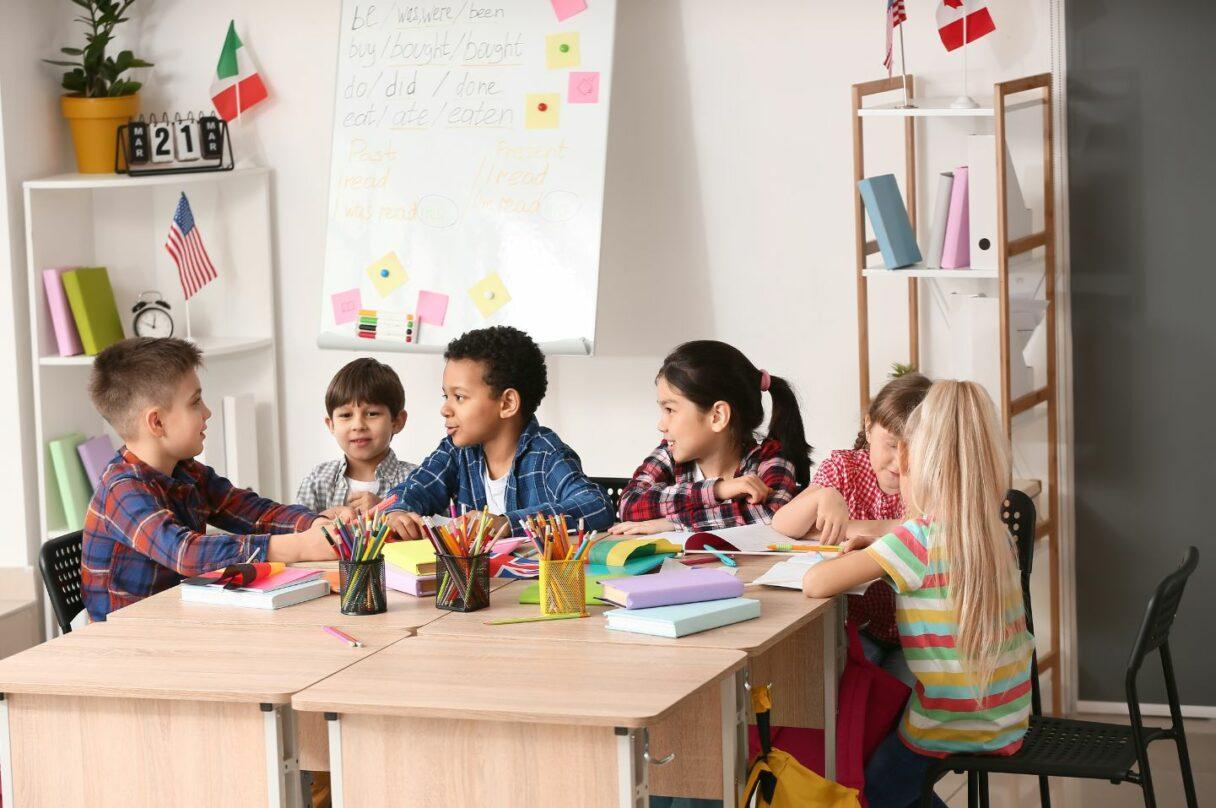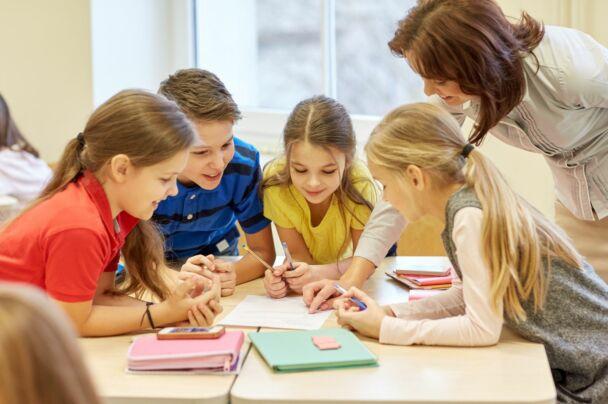Task-Based Learning: what it is?
Task-Based Learning (TBL) is all about your students creating, producing, or designing something in class… it could be anything… anything at all. TBL includes the 21st Century skills of Communication, Collaboration, Creativity, and Critical Thinking (4C’s) and can also be described as a short interactive assignment that results in a finished product.
The Task part of Task-Based Learning has been (more or less) defined by linguistic scholars as:
- things people do in everyday life (Long, 1985).
- a goal-oriented activity that leads to an outcome or result (Willis, 1996).
- a completed work plan which can be assessed (Ellis, 2003).
What kind of activity is a task?
In 2007, Jane Willis and her husband Dave Willis came up with the following criteria in their book Doing Task-Based Teaching (pp. 12-14) which can be used to discern a task:
- Will the activity engage learners’ interest?
- Is there a primary focus on meaning?
- Is there a goal or an outcome?
- Is success judged in terms of the result?
- Is completion a priority?
- Does the activity relate to real-world activities?
If your answer is yes to all the questions, you can be sure that the classroom activity you have in mind is task-like.
Task-Based Learning and Task-Based Language Teaching

TBL is an approach to teaching that was originally used by second or foreign-language teachers. It is an approach that stems from Communicative Language Teaching (CLT) – a language teacher methodology – which emerged in the 1970s.
Language teachers originally adopted Task-Based Learning for a variety of reasons with the most important being the desire to make their classrooms more student-centered, communicative, and collaborative by incorporating more interactive tasks.
Task-Based Learning (TBL) is also known as Task-Based Language Teaching (TBLT) and Task-Based Instruction (TBI). Its principal focus is on the completion of meaningful tasks. Such tasks can include creating a poster, producing a newsletter, video, or pamphlet, or designing a map of the school or neighborhood.
The Task Cycle > Task / Plan / Report
The TBL formula includes the following stages:
Pre-task
The teacher introduces the topic and gives students clear instructions and guidelines on what they will be doing during the three-part task cycle (below). This phase will give students a clear understanding of what will be expected of them and include any important knowledge or details they need to know.
This is also a good time to lead into the task by brainstorming or asking questions about the topic. Teachers can also get students ready for the task by presenting an example of the task or introducing a picture, audio, or video which will be useful in completing the task.
Task
Students get ready to do the task. Students are given what they need to complete the task (handouts and written instructions) and are assigned to work in pairs or small groups while the teacher monitors and offers encouragement when necessary. The teacher’s role is typically limited to one of a coach, guide, and facilitator.
Plan
Students work on the task in pairs or small groups and prepare to report or present their results or product. They make important decisions about their presentation and assign each person in the group with a part of the task to present, so everyone takes responsibility during the report stage. The group rehearses its presentation. The teacher walks around, helps if needed, and takes notes on anything that needs to be addressed after the presentations.
Report/Present
Students present their findings to the class in the form of a presentation. The rest of the class listens to the reports and writes down feedback which will be given to the presenters after all reports have been heard. The class can also ask questions or provide some quick oral feedback after each presentation. The teacher also gives feedback on the content as well. Students vote on the best presentation, report, or product.
Feedback
After presenting their completed task, others in the class can offer constructive feedback.
Several ways to do so include:
- Two stars and a wish – two positive things about the presentation and one suggestion,
- The 3, 2, 1, Formula – Three likes, Two suggestions, and One question.
- Finally, feedback can be given based on things like the content of the presentation, use of visuals, eye contact, etc.
How to create your own TBL lesson

Here is a template for creating your own Task-Based Learning lesson or activity:
- Design a ……………………………………
- Create a …………………………………….
- Produce a …………………………………..
- Task: What would you like your students to design, create, or produce?
- Plan: What specific instructions will you give your students for doing this task and what guidelines should they follow during their planning stage?
- Report/Present: What do you want your students to report or present and how much time will you give them to explain or present their ideas?
There are many different TBL interpretations so don’t hesitate to make it your own.
An example of Task-Based Learning Activity
Jane Willis (1996) came up with A Framework for Task-Based Learning that includes coming up with tasks that revolve around a certain topic. This can be very useful for teachers looking for task ideas to engage their students during a lesson.
See the example to follow:
Topic: Travel
- Listing: List three reasons why people love to travel.
- Ordering, Sorting, and Classifying: Put pictures of different travel destinations in order from the most desired to the least desired destination. Sort travel destinations from the northern to the southern hemisphere. Classify destinations by languages people speak.
- Comparing or Matching: Compare different countries. Match people to their country of origin.
- Problem Solving: Think of three low-budget travel destinations.
- Creative Task: Create a travel poster or find out about different countries and become an expert on a country that you would like to travel to in the future.
- Share Personal Experiences: Share stories about past travel destinations. Write a poem about your favorite place and share it with the class.
6 Advantages of Task-Based Learning
- Students are at the center of learning.
- Students are working on something that is personal and relevant to them.
- Students gain practice in collaborating with others and making group decisions.
- Students spend a lot of time communicating.
- Students take on responsibility for engaged learning.
- TBL is enjoyable, motivating, and a great place to start for teachers thinking about incorporating more Project Based Learning at their schools or classrooms.
Conclusion

Task-Based Learning has many interpretations and you, the teacher, can adapt and make anything your own. Although TBL was originally developed with language teachers in mind, the core of every Task-Based Learning lesson, as the name suggests, is the task.
A Task-Based approach offers an alternative for teachers who are interested in creating a more student-centered environment in their classroom. In a task-based class, the lesson is based on the completion of a central task and its presentation.
TBL incorporates all 4C’s and is a great way to get students used to working on Project Based Learning (PBL) because it includes many of the same skills but, in a smaller, more digestible way.
Whereas PBL requires working on a project for an extended period, TBL can be done in one or two lessons and can be a good starting point for teaching students how to communicate, collaborate and work on presentations with others.
Resources
- Willis D. and J. Willis (2007) Doing Task-based Teaching. Oxford: Oxford University Press
- Willis J. (1996) A Framework for Task-based Learning. Harlow: Longman Pearson Education


Hello,
I do not use project-based learning techniques with my lessons. However, I have successfully used other methods and techniques.
Hi Mehmet, TBL or Task Based Learning is a very small PBL and can be a good place to start for teachers who are interested in incorporating more communication, collaboration, creativity, and collaboration between students in their classrooms.
Yes, I think that collaborative method and game-based learning develop students’ creativity. Of course, we can say that these also contribute to many more mental development of children.
Thanks to Sheila i met in’Florence in January 2018, I use Willis´s model to set up TBL in class…it does work very well.
Now I am a teacher trainer and I teach them how to set up this pedagogical method in class.
So glad you’ve found this approach useful to you in both your own classroom and in your training of other teachers. By the way, I have very fond memories of you in my teacher training classroom, Chantal. =)